With an estimated 37 million Americans experiencing food insecurity in 2018, both food banks and food pantries are crucial components of efforts to reduce hunger across America. Although they work together cohesively to feed the hungry, the two terms are often mistakenly used interchangeably. But in fact, there are some key differences between a food bank and food pantry. Here are three ways to distinguish between these two pivotal components of the fight against hunger.
Food pantries distribute food directly to the community.
One way to tell the difference between a food pantry and food bank is to know that only one of them feeds people directly. Food pantries are charities that deliver food and grocery products directly to the community, filling low-income families’ fridges. Pantries have the responsibility to seek out and help local individuals and families receive food.
In an effort to remove the barriers that prevent access to underserved areas, food pantries are increasingly going mobile. Mobile food pantries enable quick, flexible delivery of rescued perishable food products, including baked goods, meat, and fresh produce.
Food banks function as warehouses.
Although they vary widely in size, food banks hold a lot more food than food pantries do—typically millions of pounds of food. Food banks accommodate large quantities of food purchased in bulk or at wholesale prices, as well as food that’s been donated from local neighbors, businesses, and grocery stores. As a centralized hunger relief organization, a food bank acts as a supply line, working through a network of food aid partners and programs to distribute groceries to places like food pantries, soup kitchens, and after-school programs.
Food banks not only deliver canned goods to local food agencies, but they also provide perishable items that need to be given out to people and consumed quickly. Food banks often purchase rarely donated meat and poultry in bulk at very low cost for redistribution to its member agencies. Other in-demand perishable food items delivered to food pantries include eggs and dairy.
Feeding America’s nationwide network of food banks secures and distributes more than 4 billion meals annually through food pantries and meal programs throughout the United States.
Food banks offer additional services to help their clients.
Many food banks engage in community outreach and offer educational initiatives that strive to break the cycle of poverty and improve the quality of life for food insecure people. These programs may include health screenings, food education classes, and workforce development, among other initiatives. A few innovative food bank initiatives include gleaning programs, partnerships with local farms to deliver healthy produce to clients, and nonprofit grocery stores.
Food banks may also provide additional resources to clients through federally funded programs such as the Commodity Supplemental Food Program (CSFP), which supplements seniors’ diets with nutritious foods.
Get involved!
Although food banks and food pantries are different in a few key ways, they’re both integral components of the fight against hunger. If you’re interested in giving back to your community by volunteering with a local organization that’s dedicated to reducing food insecurity, find your perfect fit by exploring a volunteer opportunity website, such as VolunteerMatch, Idealist or All for Good.






